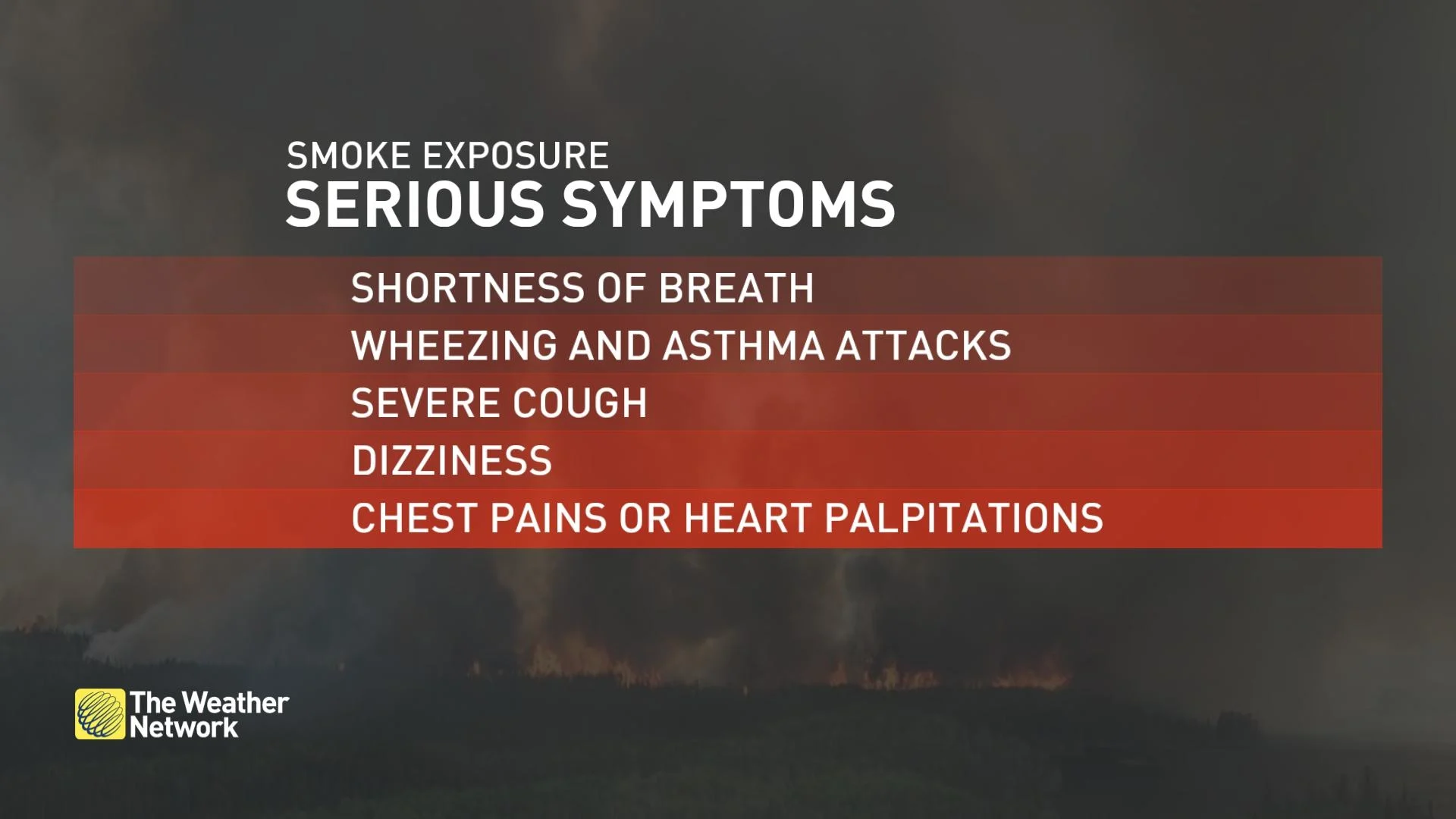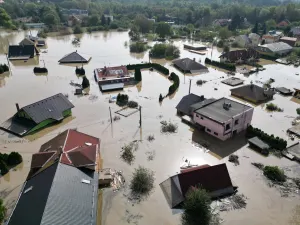
Manitoba air quality impacted by wildfire smoke from Saskatchewan
Manitoba received a mixed batch of weather news on Wednesday, with a warning on one hand and optimism on the other.
The long-range forecast calls for a drawn-out summer with above-normal temperatures extending patio season well into October. But in the more immediate present, people are being encouraged to limit their time outdoors due to heavy wildfire smoke in the air.
Environment Canada has issued an air quality advisory for a chunk of northern Manitoba as well as much of the central area, Interlake region and the southeast.
SEE ALSO: 2024 confirmed as costliest year on record for weather disasters in Canada
"Very poor air quality and reduced visibility in some areas" is being experiences in the communities under the advisory. The full list can be found on Environment Canada's website.
"Last night around 6 p.m. to 7 p.m., it really got thick here," said meteorologist Chris Stammers.
Northwest winds are pushing smoke into Manitoba from fires in north-central Saskatchewan, he said.
"[But] there's also a new fire over Idaho in the United States that's kind of getting caught in the upper level winds and being brought back into Manitoba. So there's a couple sources to our north and south. It's certainly weird."
The conditions can fluctuate over short distances and can vary considerably from hour to hour, the advisory says. During heavy smoke conditions everyone is at risk, regardless of their age or health.
Those more likely to be impacted are seniors, pregnant people, people who smoke, infants and young children, people who work outdoors, people involved in strenuous outdoor exercise and people with an existing illness or chronic health condition.
The fine particles in the smoke pose the main health risk.

Symptoms can include milder and more common symptoms such as eye, nose and throat irritation, as well as serious but less common symptoms such as chest pains or severe cough.
The winds are expected to shift from north to easterly flow for the next couple of days, easing the impact from Saskatchewan but potentially increasing the one from Idaho, Stammers said.
"It always is really tricky to determine when exactly things will start to dissipate, but it does look like we've had some significant improvement here this morning already," he said about southern Manitoba.
'Certainly looking warm'
Once the conditions have cleared up, Manitobans should be able to enjoy an unusually warm autumn.
"That's kind of the trend right now, is that we're seeing still above-normal temperatures for the next couple of weeks at least," Stammers said.
"Our normal [daytime high for southern Manitoba] right now is only 19 C and we were pushing 30 C earlier this week. Today will be a little cooler, but still, 23 C is above normal."
The heat is forecast to build up again by week's end and keep daytime highs in the mid- to upper 20s well into next week, at least, he said.

"Beyond that it's really hard to tell but … most of our long-range models are indicating above normal. I mean, I wouldn't say we're going to continue being 30 C as our as our normals continue to drop, but certainly looking warm."
That hot dry weather that has also been a prime ingredient in the forest fires, which is why the smoke is continuing to be a problem into fall, Stammers said.
Thumbnail courtesy of Jennifer Still via CBC News.
The story was originally written by CBC News. It contains files from Meaghan Ketcheson.









